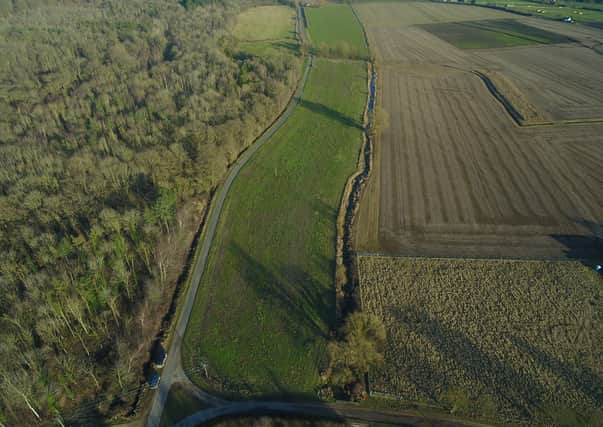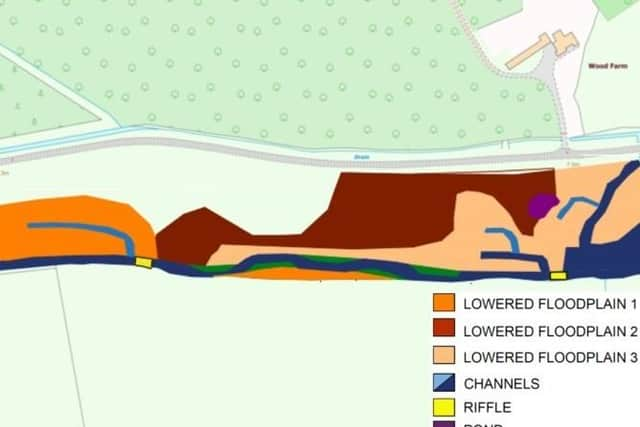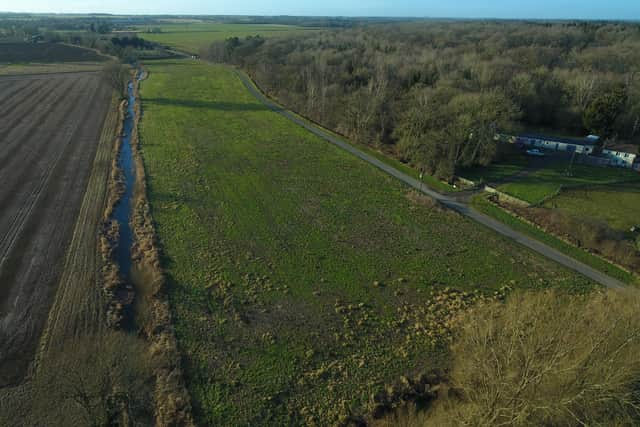Work to begin on project to put bends back in river near Sleaford


Farm land owners Beeswax Dyson have been collaborating with the Environment Agency and the Wild Trout Trust, designing a scheme on its land to carry out flood improvement works to the Dunston Beck.
The project is taking place on a three-hectare parcel of land to the east of Dunston village, bounded by Dunston Fen Lane to the north, Prior Lane to the west and the Dunston Beck to the south and east.
Advertisement
Hide AdAdvertisement
Hide AdThe aim is to improve the Beck and adjacent land for the benefit of wildlife, by adjusting the historic impacts of land drainage where the Beck was straightened, widened and deepened.
Through sensitive excavation, bends will be put back into the channel creating a variety in depths and flow patterns to filter the sands and gravels on the riverbed, improving water quality. The work will re-connect a straightened section of the Beck with its old meandering course and floodplain.
The land alongside the beck is being lowered to different heights, allowing it to become wetter at different times according to the Beck’s water level.
This creates a mosaic of habitats ranging from marshy wetland to drier meadow areas.
Advertisement
Hide AdAdvertisement
Hide AdSeeding and planting with locally sourced, native plants and carefully managed grazing, will ensure a rich and diverse flora. In turn, this benefits insects and other invertebrates which pollinate not only wildflowers but also nearby crops.


The groundworks are starting at the beginning of this month and are expected to take four to six weeks to complete. This follows several months of design and planning work.
Ecological surveys have been carried out to ensure the existing wildlife on the site is not harmed. Archaeological surveys have been carried out and the works will be overseen by a specialist in this field.
Three years ago the Wild Trout Trust, working with the Environment Agency, was also successful in obtaining £50,000 of Government funding towards another £137,000 river restoration scheme upstream of Dunston.
Advertisement
Hide AdAdvertisement
Hide AdThe restored channel was made more winding than the artificially straightened channel, more connected to its floodplain and tending to spill out of its banks more frequently during high flows, to provide a defined flood storage area for water and deliver it downstream towards the village more slowly, reducing peak flows and flooding. The restored channel and floodplain also provides much better habitat for wildlife such as fish and ground-nesting birds.


This section was within some low-lying land between the railway line and the B1188, to the south-west of Dunston village (north of the existing channel of the beck).
Tim Jacklin, Conservation Officer at the Wild Trout Trust, at the time explained that it forms part of the wider Lincolnshire Limestone Becks Project, which is a partnership between Lincolnshire Rivers Trust, his organisation and the Environment Agency.
He said: “The aims of the Becks project are to involve communities in appreciating and looking after their local beck, improving wildlife habitat and improving resilience of the becks to flooding and droughts.”
Advertisement
Hide AdAdvertisement
Hide AdLincolnshire Rivers Trust submitted a bid to the Heritage Lottery Fund for the wider Limestone Becks project and recently received £206,000 from the government’s Green Recovery Challenge Fund to deliver projects.